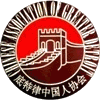When Chinese students join CSA, they gain valuable skills that are beneficial for their career after graduation. These include networking and teamwork. They also learn about authentic culture and society.
Photos and witness accounts show that Wan traveled extensively in Southeast Asia on behalf of Hongmen, meeting with lawmakers, cabinet ministers, and officials close to Beijing. These trips are likely financed by China, experts say.
Modern China
China is a unique country that has many contrasts between city and countryside, north and south, Han majority and ethnic minority peoples. It is also a state that has both private property and public ownership of important sectors of the economy.
Traditional Chinese culture has a strong continuity that is unique in world history and has significant contemporary value. It is rooted in the soil of the Chinese nation and coalesces historical wisdom, intellectual pursuits, and practical innovation in its own ways.
BCA provides the community with cultural and language education programs for children, adults, and families. In addition, BCA is a founding member of the Chinese Heritage School which offers an integrated learning environment for students of all ages. This program is a major component of the BCA’s educational outreach and it has become a model for other local community organizations. The school is a non-profit organization supported by the community and is a City of New York certified language school.
The Journal of Chinese Studies
The journal features high-quality essays on Chinese history, politics, economics, society and culture. Its aim is to promote the study of China and its people. It also supports the exchange of ideas between scholars and students of different disciplines.
This is important because the Chinese community in the United States is a very diverse group. In addition to being a cultural hub, it is also a business network that has significant influence in the country’s economy. CSA has made this its priority, even going so far as to encourage members to interact with local politicians and business owners.
In the 19th century, anti-Chinese nativist sentiment was prevalent in many American communities. As a result, Chinese immigrant groups formed to support their families and build business connections. These groups were often known as tongs, or secret fraternal societies. In cities like Chicago and New York, tongs competed with more traditional family associations. In the end, many tongs merged with family associations or joined long-established combined fang organizations.
The Journal of Contemporary Chinese Affairs
CSA provides an important supportive cultural and social environment for Chinese students and scholars to foster industry unity and development. Its mission also involves the understanding of Chinese lifestyle and culture through projects focused on awareness and education.
As anti-Chinese nativist sentiment rose on the West Coast, many immigrants formed associations to support each other in their new home. These “huiguan” based their membership on commonalities such as shared surnames, ancestry, or neighborhoods. These organizations often helped to run businesses and fight anti-Chinese laws.
Moreover, the CSA has strong connections with Chinese associations, research institutes and political organizations worldwide, and regularly conducts high-level dialogues for both domestic and international participants. It also maintains close relationships with mainstream organizations that provide services for the Chinese community, such as Visiting Nurse Service and the American Red Cross of Greater New York City. This allows CCBA to better serve the community. Lastly, it encourages non-Chinese students to join its activities, and many find the experience useful for their careers or personal growth.
The Journal of Modern Chinese History
The Journal of Modern Chinese History publishes innovative scholarship on late imperial and modern China. It encourages research in all aspects of Chinese history—social, economic, cultural, political and intellectual—and seeks contributions that reflect important trends in scholarship.
This second edition of Modern Chinese History has been revised to include new scholarship, re-examining topics such as Chinese regionalism and nationalist movements. It has also been updated to address the changing face of modern China, as Beijing continues its efforts to assert itself in North Korea, India and beyond.
The book offers a concise introduction to the complex and diverse heritage of this vast nation. It explores how Chinese peasants, soldiers, and intellectuals have shaped their society and culture. Unlike many introductory texts that emphasize twentieth-century events to the exclusion of earlier eras, it opens with the Qing dynasty and includes the Republican and Communist eras as well. Two major themes drive this text: cosmopolitanism and exceptionalism. The first recognizes the importance of international and cross-cultural encounters in Chinese history, while the latter examines how China has frequently challenged scholarly assumptions about historical patterns and norms for nation-states.
